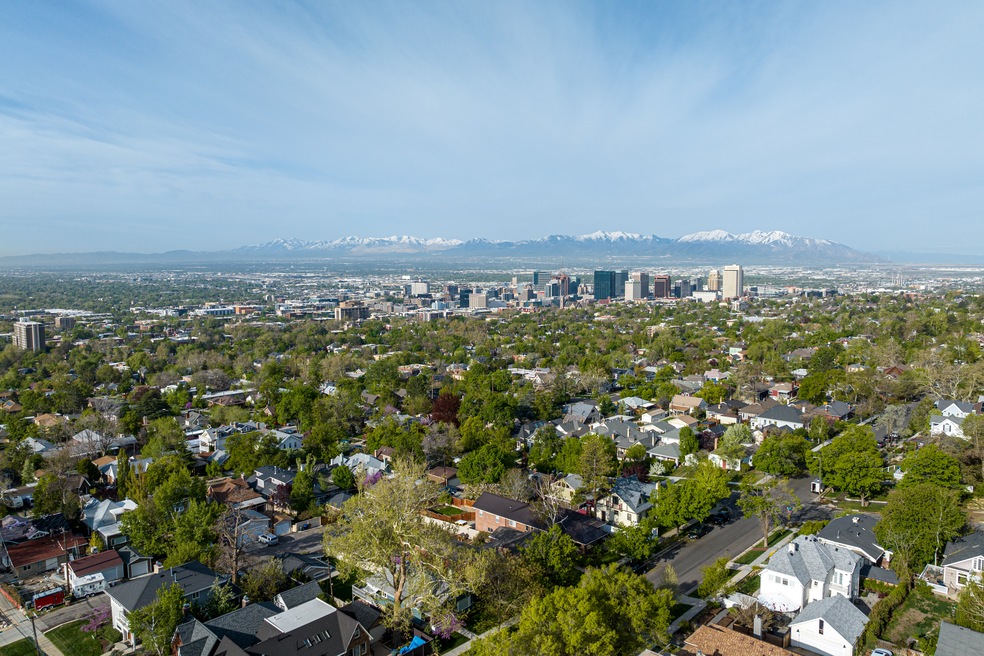Like many places in the U.S., Salt Lake City has seen a rapid rise in home prices since the pandemic and heightened concerns about people’s ability to make a purchase. It’s especially bothersome for residents in Utah’s capital who place a high value on ownership.
Aware of how much house values can contribute to one’s wealth, city leaders are trying to identify novel ways to make ownership possible for more residents with low incomes. The city’s redevelopment authority plans to award grants from a $3 million fund to support a variety of programs, potentially including rent-to-own schemes, giving renters a stake in their buildings’ financial success, and other tools.
The city’s median sales price for all residential properties was $545,000 in November, having risen gradually from $515,000 last February, according to Homes.com data. The median price for single-family homes was $620,000 last month, up from $590,000 in February. The homeownership rate within the city is 50%, but the U.S. Census reported it was 70% across Utah in 2023, higher than most states.
“Utah’s always been an ownership state; we have larger households and it’s family-friendly, so ownership is a major component of our societal structure,” said Dejan Eskic, a senior research fellow at the University of Utah’s Kem C. Gardner Policy Institute, in an interview.
Nonprofit, public and private-sector groups with experience operating wealth-building housing programs are eligible for the city grants, with priority given to efforts that can benefit residents sooner rather than later. The idea for the program came out of Thriving in Place, a two-year strategy the city adopted in 2023 to prevent residents from being displaced from their homes as a result of rising rents and home prices.
Salt Lake City “has been growing like crazy,” Eskic said. It issued 2,679 residential permits in 2022, 77% of which were for apartments for rent. There were 540 permits issued for condos or townhouses. Many of the new apartment developments cater to young people moving to the city to work in downtown jobs, according to Eskic.
The city’s Thriving in Place strategy notes that many existing residents have not benefited from the economic boom. Neighborhoods like those on the city’s West Side that historically were perceived as more affordable have become less so. Families with children who need homes with more bedrooms are at a particular disadvantage in the current housing market, according to the strategy.
The city government collaborated with locally based Zions Bank and Intermountain Health Care in 2023 to invest a combined $25 million toward a series of shared-equity housing projects. Perpetual Housing Fund, a Salt Lake City-based nonprofit developer, is using a portion of the funding to build roughly 200 apartments in a former office building in the Central City neighborhood. The company also has plans for about 1,000 more similar shared-equity homes elsewhere in the city. Renters in these buildings will have a stake in how well their properties do financially.
The first 96 units in the Central City building that are limited to households that earn 30% to 55% of the area's median income are under construction. Half of the apartments will be sized for families with three or four bedrooms. The renters will have a 75% share in the development’s profits; the typical tenant will get a $1,000 rebate at the end of each year and $40,000 if the building is sold or refinanced. Tenants will also be offered a chance to buy an affordable home elsewhere from Perpetual Housing and its development partners, allowing them to use the equity they accumulate as renters toward a down payment.
Having access over time to a share of an apartment building’s profits can give families with relatively low incomes a “life-changing” amount of money, Perpetual Housing co-director Chris Parker said in an interview.
“You have this moment when the person earning the median income in Utah can’t afford any home in Salt Lake City,” he said. “You’ve seen this movement to re-attach where people live to how they might generate a nest egg or pay for their kid’s college or how they might retire.”
In its request for proposals from groups to apply for a share of the $3 million, city officials listed 10 eligible project types that involve ownership. Among them are rent-to-own developments in which tenants receive a rent rebate that can be used toward a down payment. Other potential uses are for cohousing, in which residents have private homes but share common spaces, homes that combine residential living with a workspace, or converting apartments to condos.
“We are casting a relatively wide net with a variety of programs to see which of them will be more promising in delivering new wealth-building units,” said Browne Sebright, a city project manager.
Because some of the housing models the city is considering are relatively unusual, Victoria Petro, a Salt Lake City councilor, said she expects applications for a portion of the $3 million to be reviewed with “high levels of rigor.”
“Things like renters’ equity sound like frivolous ideas and when we have political opposition, anything that can be labeled a boondoggle will be,” Petro said during a city redevelopment authority discussion of the grant program in November. “Then we will lose the ability to push forward on concepts that must become common in the development community.”

